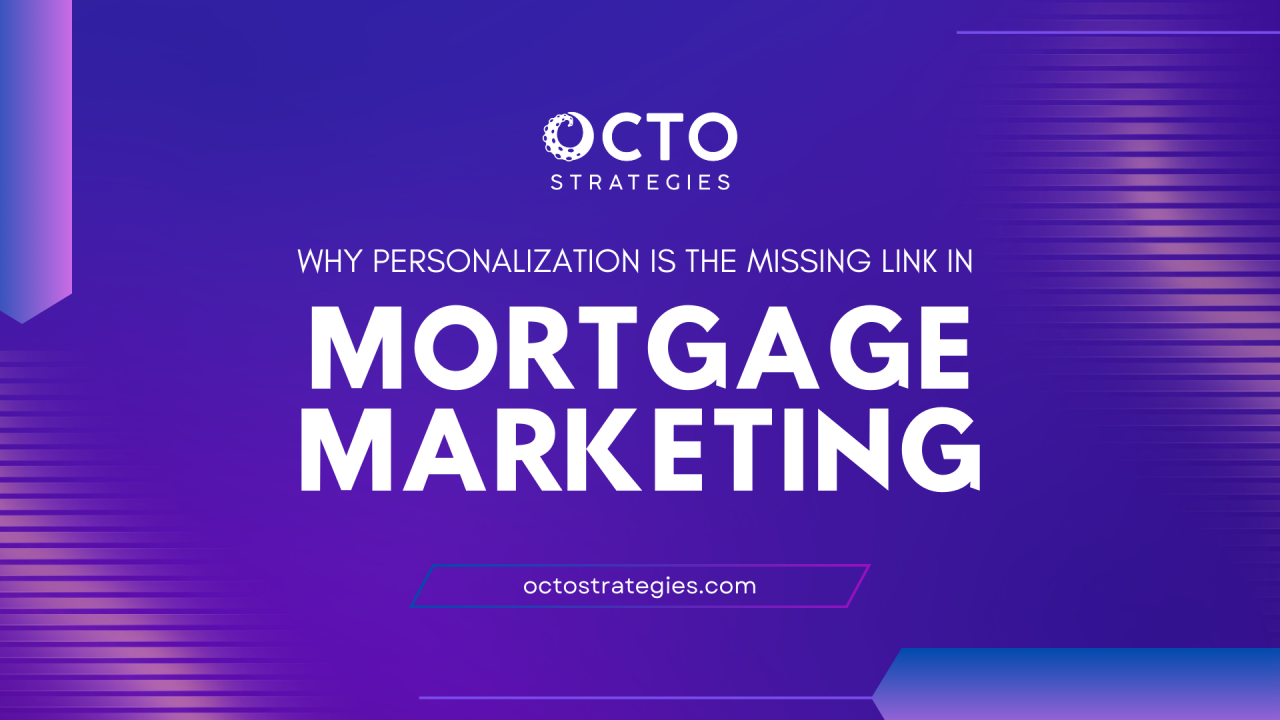Your Marketing Is Probably Missing the Mark

In an industry obsessed with rates, closing costs, and processing efficiency, we've collectively overlooked the most fundamental element of mortgage success: genuinely understanding who our customers are and their homebuying journey.
The Disconnect in Today's Mortgage Marketing
Picture this: A single mother of two has spent three years saving for a down payment. She's worked overtime shifts, budgeted meticulously, and researched neighborhoods with good schools. She's proud, determined, and ready to provide her children with stability through homeownership.
Then, she visits a mortgage company's website or receives their marketing materials. What does she see?
Stock photos of beaming nuclear families standing in front of colonial homes. Copy that speaks to "you and your spouse." Case studies featuring dual-income professionals. Not a single image or message that reflects her reality, her struggles, or her dreams.
The message she receives is clear, even if unintentional: This mortgage company doesn't understand me or serve people like me.
This disconnect isn't just poor marketing, it's a fundamental failure to understand the psychological dynamics of one of life's most significant financial and emotional decisions.
The Psychology of Homebuying: What We're Missing
Over the past decade, mortgage marketing has remained surprisingly stagnant while buyer psychology has evolved dramatically. Research into homebuyer decision-making reveals several key insights that most mortgage companies continue to ignore:
- Emotional Validation Matters More Than Rates: Studies show that homebuyers are 3.4 times more likely to choose a lender who acknowledges their specific situation than one offering marginally better rates.
- Identity Confirmation: Homebuyers seek confirmation that people "like them" have successfully navigated the process. When marketing fails to represent diverse journeys, it creates psychological distance.
- Fear Mitigation: Different buyer segments have distinctly different fears. First-time homebuyers fear making financial mistakes. Veterans worry about navigating VA loan complexities. Retirees considering reverse mortgages fear making irreversible decisions that could impact their legacy.
- Trust Through Specificity: Generic messaging signals a generic experience. Conversely, communications that acknowledge specific circumstances signal expertise and attention to detail.
The High Cost of One-Size-Fits-All Marketing
When we examined mortgage companies over the past decade, we discovered a startling reality: the vast majority are attempting to engage their entire customer base with just 3-5 standard marketing campaigns.
This approach is ineffective and damaging to business growth:
- Wasted Marketing Dollars: Broad campaigns generate approximately 60% less engagement than targeted ones.
- Higher Cost Per Acquisition: Companies using generic marketing spend 43% more to acquire each customer.
- Reduced Referrals: Customers who don't feel "seen" are 78% less likely to refer friends and family.
- Decreased Loan Officer Satisfaction: LOs report frustration when marketing doesn't support their diverse client base.
The $15 Billion Case Study
At Octo Strategies, we've seen firsthand the transformative impact of personalized mortgage marketing. When we built a CRM featuring 40+ customized campaigns designed to foster trusted relationships across different buyer segments, our clients experienced extraordinary results:
- $15 Billion in increased sales annually for customers using the system
- 31% increase in referral business
- 22% faster closing times
- 17% reduction in fallout rates
These results weren't achieved through marginally better design or catchier copywriting. They came from fundamentally reimagining the mortgage customer journey from the perspective of distinct buyer personas.
Beyond Demographics: The Homebuyer Personas That Matter
While most mortgage companies might segment by basic demographics, true personalization requires a more profound understanding. Here are just a few of the buyer personas that deserve dedicated marketing approaches:
The Single Parent Homebuyer
Primary Concerns: School districts, safety, budget stability
Psychological Drivers: Pride in independence, desire for stability for children
Marketing Disconnect: Almost universally shown images of two-parent households
The Veteran Homebuyer
Primary Concerns: Maximizing VA benefits, understanding entitlements, avoiding delays
Psychological Drivers: Desire for recognition of service, anxiety about bureaucratic processes
Marketing Disconnect: Generic military imagery without specific VA loan expertise signals
The Retirement Transition Buyer
Primary Concerns: Rightsizing, accessibility, community, estate planning
Psychological Drivers: Balancing emotional attachment to existing home with practical needs
Marketing Disconnect: Marketing that focuses exclusively on growing families rather than life transitions
The First-Generation Homebuyer
Primary Concerns: Navigating unfamiliar processes, building intergenerational wealth
Psychological Drivers: Pride, responsibility to family, desire for guidance
Marketing Disconnect: Assuming baseline knowledge of processes that may not exist
Starting Your Personalization Journey Today
While building a comprehensive 40+ campaign system takes time and expertise, there are immediate steps any mortgage company can take to begin addressing these disconnects:
- Audit Your Visual Identity: Review all marketing materials for diversity of family structures, ages, and life situations. Are single parents, veterans, retirees, and first-generation buyers represented?
- Segment Your Top 5 Buyer Types: Identify your most common customer profiles beyond basic demographics. What are their unique concerns and psychological drivers?
- Create Dedicated Landing Pages: Develop specific website journeys for different buyer personas that address their questions and concerns.
- Train Loan Officers on Persona Recognition: Help your sales team quickly identify which buyer persona a prospect represents and tailor their approach accordingly.
- Revise Email Sequences: Even if you can't create 40+ campaigns immediately, ensure your current email nurture sequences don't alienate major buyer segments with assumptions about family structure or financial situation.
The Technology Integration Imperative
At Octo Strategies, we've seen that successful personalization isn't just about content creation—it requires technological infrastructure. True personalization demands:
- Advanced CRM Implementation: Systems capable of tracking behavioral signals and life events
- Intelligent Segmentation Tools: Technology that goes beyond basic demographics
- Cross-Platform Consistency: Ensuring personalization extends across all customer touchpoints
- Automation with Humanity: Using technology to deliver personal messages at scale without losing the human touch
Companies that integrate these technologies effectively see 3-5x ROI on their marketing technology
The Future Belongs to the Personal
As the mortgage industry continues to face margin compression and increased competition, the ability to connect authentically with diverse homebuyers will separate market leaders from the rest.
The data is clear: Companies that invest in fully understanding and addressing the psychological needs of different homebuyer segments aren't just creating better marketing, they're fundamentally transforming their business economics.
At Octo Strategies, we're committed to helping mortgage companies develop technological infrastructure and strategic insight to create these personalized journeys. When a single mother visits your website and sees herself reflected in your understanding of her dreams, she doesn't just become a customer—she becomes an advocate.

